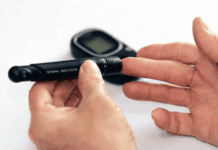In today’s fast-paced healthcare environment, providing patients with educational materials that are clear, accurate, and readily accessible is more important than ever. This is particularly true for medical practices, clinics, and hospitals, where patient education plays a significant role in ensuring patients understand their conditions, treatment options, and the steps necessary for maintaining their health. Traditional methods of delivering these materials, such as handing out brochures or relying on in-person consultations, are increasingly being replaced by more efficient and scalable solutions. One such solution is the use of virtual reception services, which have become a pivotal part of modern healthcare systems. A medical receptionist virtual assistant can handle a wide variety of administrative tasks, including the distribution and management of patient education materials.
The Role of a Virtual Medical Receptionist in Patient Education
A virtual medical receptionist is a professional who provides remote reception services to healthcare practices, offering the same support and assistance as an in-house receptionist but through digital channels. These receptionists play a critical role in streamlining administrative functions and ensuring that patients have a seamless and positive experience when interacting with healthcare providers.
One of the core duties of a virtual medical receptionist is handling patient education materials. In this context, patient education materials refer to written or digital content that provides valuable information to patients about their medical conditions, treatments, and self-care practices. This can include brochures, videos, infographics, instructional guides, and other types of educational content.
Efficient Management and Distribution of Educational Materials
A key advantage of using a virtual medical receptionist is the ability to streamline the management and distribution of patient education materials. Traditionally, staff would need to manually hand out brochures or documents during patient visits. However, with the use of virtual reception services, patients can receive educational materials electronically, making the process far more efficient.
Virtual receptionists can send educational materials through various channels, including email, SMS, or secure patient portals. These materials can be tailored to the specific needs of the patient, ensuring they receive the most relevant information based on their diagnosis, treatment plan, or concerns. By automating the distribution process, virtual receptionists ensure that patients receive timely, accurate, and personalized educational content without burdening in-house staff.
Customizing Educational Content for Patients
One of the primary benefits of utilizing virtual medical receptionist services is the ability to customize patient education materials. Healthcare providers can create or choose from a wide range of resources, tailoring them to specific patient needs, health conditions, or treatment options. For example, a patient diagnosed with diabetes may receive educational materials focused on diet and exercise, while a patient scheduled for surgery might receive information on preoperative preparation and postoperative care.
A virtual medical receptionist can manage these materials in a centralized system, ensuring that patients always receive the most up-to-date and relevant information. This not only enhances the patient experience but also contributes to improved health outcomes by ensuring patients are well-informed about their conditions and care plans.
Streamlining Follow-Up and Communication
Following up with patients after an appointment or treatment is essential for ensuring they understand the next steps in their care journey. A virtual medical receptionist can play an instrumental role in facilitating this communication, ensuring patients continue to receive important educational content after their initial visit.
For example, if a patient is prescribed a new medication, the virtual medical receptionist can send a follow-up message with educational materials about the medication, its possible side effects, and how to take it properly. Similarly, if a patient undergoes a procedure, the virtual receptionist can send a series of instructional materials, videos, or guides about post-procedure care, helping patients recover effectively.
Improved Accessibility for Patients
In many healthcare settings, patients have limited time to receive information during their appointments, leading to potential gaps in understanding. Additionally, patients may have varying levels of health literacy, which can make it challenging to comprehend complex medical information.
Virtual reception services, however, help overcome these barriers by providing patients with multiple opportunities to access educational materials. Patients can review the content at their own pace, ask questions if needed, and revisit the materials as often as necessary. This accessibility is particularly valuable for patients who may be unable to attend in-person appointments due to scheduling conflicts, mobility issues, or geographic constraints.
For instance, patients in rural areas or those with busy work schedules may not be able to visit the clinic frequently. By offering virtual access to educational resources, a virtual medical receptionist ensures these patients can still receive the information they need to make informed decisions about their healthcare.
Multi-Language Support for Diverse Patient Populations
Healthcare providers serve diverse patient populations, and language barriers can often hinder effective communication. Virtual reception services are equipped to offer multi-language support, ensuring that all patients, regardless of their language preferences, can access educational materials in their preferred language.
A virtual medical receptionist can send educational materials in different languages, ensuring that patients who do not speak English or have limited proficiency in the language can still understand important information about their condition or treatment. This is particularly important in communities with high concentrations of non-English speakers, as it helps ensure that all patients have equal access to healthcare information.
Increased Patient Engagement and Satisfaction
Patient education is not just about delivering information; it’s also about fostering patient engagement. When patients are empowered with knowledge, they are more likely to participate actively in their healthcare decisions and follow treatment plans. Studies have shown that well-informed patients tend to have better health outcomes and are more satisfied with their healthcare experience.
A virtual medical receptionist helps boost patient engagement by providing educational materials that are clear, concise, and easy to understand. The ability to offer information on-demand, through various formats such as text, video, or images, makes it easier for patients to engage with the content. Moreover, by automating the delivery of educational materials, virtual reception services can ensure that patients receive the right information at the right time, further enhancing their sense of involvement in their healthcare journey.
Cost-Effectiveness for Healthcare Practices
In addition to improving the patient experience, virtual reception services can offer significant cost savings to healthcare practices. By automating the distribution of patient education materials, practices can reduce the need for physical resources, such as printing brochures, and save on administrative costs associated with managing these materials.
Virtual receptionists also help reduce the time spent by in-house staff on tasks like answering questions about educational content or providing materials in person. This allows healthcare providers to reallocate their resources to more critical tasks, improving overall efficiency and reducing operational costs.
Furthermore, the scalability of virtual reception services allows practices to handle a large volume of patient interactions without the need for additional staff, making these services particularly valuable for practices with high patient volumes or limited administrative resources.
Integration with Electronic Health Records (EHR)
Modern healthcare practices rely heavily on electronic health records (EHR) systems to manage patient information. A virtual medical receptionist can seamlessly integrate with an EHR system, allowing for a more streamlined process when distributing educational materials.
For example, when a patient’s information is updated in the EHR, the virtual medical receptionist can automatically generate and send the relevant educational materials based on the patient’s diagnosis or treatment plan. This ensures that the right information is sent to the right patient at the right time, further enhancing the effectiveness of the educational content.
Tracking Patient Engagement and Feedback
A critical aspect of patient education is understanding how well patients are engaging with the materials provided to them. Virtual reception services can track how often patients open, read, or view educational materials, providing healthcare providers with valuable insights into patient engagement.
If a patient has not accessed the materials, the virtual medical receptionist can send reminders or follow-up communications to encourage them to review the content. Additionally, virtual receptionists can gather patient feedback about the materials, helping healthcare providers refine their educational content to better meet the needs of their patients.
Conclusion
Portiva virtual reception services have revolutionized the way healthcare providers manage patient education materials. By providing patients with timely, relevant, and easily accessible educational content, virtual medical receptionists play a critical role in improving patient understanding, engagement, and satisfaction. These services help healthcare practices streamline their administrative processes, reduce costs, and enhance the patient experience.
As patient education becomes an increasingly important aspect of healthcare, virtual reception services will continue to play an essential role in ensuring patients have the information they need to make informed decisions about their health. With the ability to customize content, improve accessibility, and integrate with existing healthcare systems, a virtual medical receptionist is an invaluable resource for modern medical practices looking to enhance the quality of care they provide to their patients.



